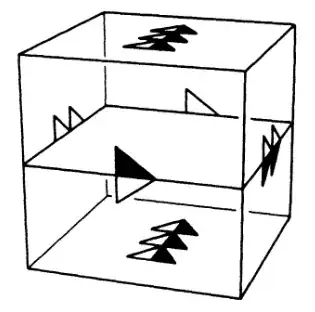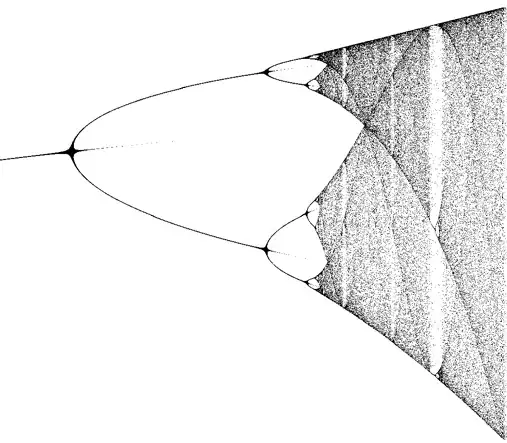Cambridge mathematicians (with the notable exception of the exceptional Dirac) have often misunderstood the Euler-Heaviside fractional integro-derivative calculus, disadvantaging their students.
False belief: A erroneous claim that has been often repeated is that the fractional calculus (FC) as envisioned by Euler and Heaviside (Hadamard, Pincherle, and others) doesn't obey the law of exponents
$D^{\alpha}D^{\beta} =D^{\alpha+\beta},$
and, specifically, differentiation $D$ and integration $D^{-1}$ do not commute, and consequently, neither do they obey the law of exponents.
One example of this apparent lack of commutativity is given on the webpage Fractional Calculus III (circa 2008) by Beardon:
$$D^{-1}D \; e^x = \int_0^x e^t dt = e^x-1 \neq DD^{-1} e^x = D(e^x-1) = e^x = D^0e^x = D^{-1+1}e^x.$$
In fact, however, commutativity applies once the Heaviside step function $H(x)$ is correctly introduced since
$$D^{-1}D \; H(x) e^x =H(x) \int_0^x (\delta(t) +e^t) dt =H(x)( 1+ e^x-1) =H(x) e^x = D^0H(x) e^x .$$
The mistaken claim of lack of commutativity is repeated in another example by Beardon illustrated below (and similar examples by others).
More generally, the Euler-Heaviside FC can be framed a number of ways to ensure the fundamental operator action is interpreted as
$$D^{\alpha}D^{\beta} H(x) \frac{x^{\gamma}}{\gamma!} =D^{\beta} D^{\alpha} H(x) \frac{x^{\gamma}}{\gamma!} =D^{\alpha+\beta}H(x) \frac{x^{\gamma}}{\gamma!} = H(x) \frac{x^{\gamma-\alpha-\beta}}{(\gamma-\alpha-\beta)!}$$
for $\alpha,\beta,$ and $\gamma$ any real numbers.
In one interpretation (e.g., see Gelfand and Shilov's Generalized Functions Vol. I, p. 57),
$$H(x) \frac{x^{-n-1}}{(-n-1)!}= D^n \delta(x)= \delta^{(n)}(x)$$
such that, under a finite part construction or other analytic continuation,
$$D^{n} H(x)\frac{x^{\alpha}}{\alpha!} =H(x) \int_0^x \frac{(x-t)^{-n-1}}{(-n-1)!} \frac{t^{\alpha}}{\alpha!}dt = H(x)\oint_{|z-x|=x} \frac{n!}{(z-x)^{n+1}}\frac{z^{\alpha}}{\alpha!}dz =H(x) \frac{x^{\alpha-n}}{(\alpha-n)!}$$
and, more generally,
$$D^{\beta} H(x)\frac{x^{\alpha}}{\alpha!} = H(x)\int_{-\infty}^\infty H(x-t) \frac{(x-t)^{-\beta-1}}{(-\beta-1)!} H(t)\frac{t^{\alpha}}{\alpha!}dt$$
$$= H(x)\int_0^x \frac{(x-t)^{-\beta-1}}{(-\beta-1)!} \frac{t^{\alpha}}{\alpha!}dt = H(x)\oint_{|z-x|=x} \frac{\beta!}{(z-x)^{\beta+1}}\frac{z^{\alpha}}{\alpha!}dz =H(x) \frac{x^{\alpha-\beta}}{(\alpha-\beta)!}.$$
Then the Euler-Heaviside FC gives
$$D^{\frac{1}{2}} H(x)\frac{x^{\frac{-1}{2}}}{(\frac{-1}{2})!} = H(x)\frac{x^{-1}}{(-1)!} = \delta(x)$$
and
$$D^{\frac{1}{2}}D^{\frac{1}{2}} H(x)\frac{x^{\frac{-1}{2}}}{(\frac{-1}{2})!}$$$$ = D^{\frac{1}{2}} H(x)\frac{x^{-1}}{(-1)!} = H(x)\frac{x^{\frac{-3}{2}}}{(\frac{-3}{2})!} = D H(x)\frac{x^{\frac{-1}{2}}}{(\frac{-1}{2})!},$$
so, in this case,
$$D^{\frac{1}{2}}D^{\frac{1}{2}} = D$$
whereas Beardon concludes that
$$D^{\frac{1}{2}}x^{\frac{-1}{2}} = 0,$$
implying that the law of exponents is violated since then
$$D^{\frac{1}{2}} D^{\frac{1}{2}}x^{\frac{-1}{2}} = D^{\frac{1}{2}}0 = 0 \neq D x^{\frac{-1}{2}} =\frac{-1}{2}x^{\frac{-3}{2}} .$$
H. and B. Jeffreys on p. 229 of their book Methods of Mathematical Physics (Second Ed., 1950), often referenced in discussions of operational calculus, assert unqualifiedly that integration and differentiation do not commute. And, Lavoie, Osler, and Trembley in "Fractional derivatives and special functions" (1976) repeated the false argument of the unqualified violation of the law of exponents. A lack of appreciation of the roles of the Heaviside step and delta functions in the Euler-Heaviside FC seems to be at the core of this oversight with a concomitant tendency (issuing from some blend of laziness, carelessness, and quasi-authoritarianism) to reprint the claims of previous researchers who have omitted discussions of the core constructs--the step and delta functions--in their analyses.
If the FC is constructed using an infinitesimal generator, the analytic continuations can be dodged, or a Pochhammer contour integral can be invoked for generalizing the beta function integral. These constructions are consistent with Laplace- and Mellin-transform approaches over the domains of common convergence and analytic continuation of the reps, with Pincherle's axiomatic treatment of a canonical FC, and with the calculus of Appell Sheffer polynomial sequences.
Mikusinski provided an analogous algebraic convolutional approach, and Sato, a hyperfunction approach, reflecting earlier presentations by Niels Nielsen and then much later than Nielsen by Feynman and others.
(An equally erroneous claim is made to the opposite extreme in an answer to this MO-Q that differentiation and integration operators commute unqualifiedly.)


